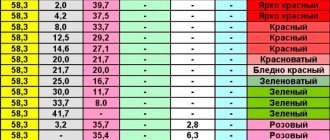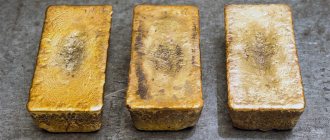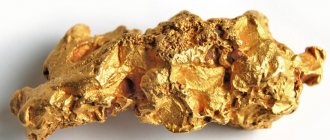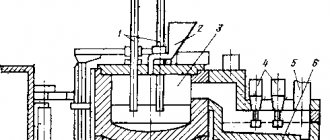The Ural region is rich in many different minerals. Gold is also found here, which is mainly found in deep mines. There are small and large deposits of the precious metal in the region. Gold mining in the Urals using artisanal methods, according to maps, has been going on for more than one century. The oldest deposit of this metal is hidden in the local mountains. Today, both large companies and private miners are looking for aurum.
Place of Birth
The high popularity of gold mining in the Urals is due to many factors. This region attracts prospectors for the following reasons:
- moderate climatic conditions allowing the extraction of gold-bearing veins within several months;
- absence of permafrost layers, which create additional problems during ore mining;
- successful gold deposits in terms of geographical location.
Gold mining in the Urals is carried out in several ways:
- Handmade or artisanal. Basically, prospectors use the gold-bearing rivers of the Urals to extract metal.
- Ore. Extraction is carried out in mines.
- Use of dredge. In this case, the rivers of the Urals are also used.
- Hydraulic.
Due to the fact that this region contains rich deposits, the ore method is used to extract metal. Examples of local ore deposits are summarized in the table below. This is a kind of map that indicates where to look for gold in the Urals.
| Type of deposit | Peculiarities | Examples of deposits |
| Indigenous | Vein and mineralized zones occur in the Urals. | Koncharskoye, Svetlinskoye, Kurosan (southern and western), Nailinskoye |
| Placers | They are a gold-bearing mass that has accumulated in one place through the transfer of ore and rock by water. | Bolsheshaldinskaya placer, Moss swamp. |
According to experts, up to 15% of the world's gold reserves are hidden in the Ural region. Analysts predict that if current production volumes are maintained, the precious metal will last for about 100 years.
The Urals are one of the richest sources of minerals. The region contains many deposits of precious metals, which are mined by both manual and industrial methods.
Primary deposits
In the Urals, gold is mined from the following types of deposits:
- vein;
- mineralized, in which, in addition to gold-bearing veins, other inclusions are found.
The Ural vein deposits, depending on the composition and depth of occurrence, can be divided into:
- quartz (up to 15 meters);
- sulfide (located at a depth of up to 2 meters);
- easily enriched, when deposits of gold ore are located almost on the surface.

When mining gold in the Urals using the artisanal method, it is recommended to select maps that contain an indication of the location of quartz. This is explained by two reasons:
- Quartz is one of the most common minerals.
- It is often adjacent to gold-bearing rocks.
These minerals come in different colors. If the discovered quartz contains empty cavities, this will facilitate further search for gold.
The presence of such formations indicates that inclusions of noble metal were previously found in the mineral. Accordingly, it can be found if you excavate neighboring veins.
Quartz deposits are among the most attractive. The fact is that they contain so-called native gold with a minimal amount of foreign inclusions. Moreover, in most cases, the metal contains inclusions of silver.
On the territory of the Ural Mountains, which lie only in the Orenburg region, about 150 gold deposits have been discovered. Private prospectors can try their luck on rivers located near:
- Kirovsky (Kvarkensky district);
- Aydyrlinsky (not far from the village of the same name);
- Blakskoe deposits (Svetlinsky district).
In all these areas, the precious metal is mined industrially. In particular, near the village of Aydyrlinsky, gold lies at a depth of more than 100 meters. From the point of view of a private miner, the Ural rivers and local placers will be the most attractive for ore extraction.
A little history
A little history about the search for gold is useful for those who want to get more information about the mining of this precious metal in the Urals. Interestingly, it was in this territory that gold was first discovered in Russia. The first gold mine began its work there. How did this happen? In 1745, Erofey Markov discovered an unusual stone in the Ural mountains, distinguished by the presence of gold particles. He took the find and brought it to Yekaterinburg. Next, the engineers arrived at the place indicated to them in search of the precious metal, but found nothing. Only Ignatius Yudin (a student of Lomonosov) managed to discover grains of gold in 1747. At the same time, the first mine began work.
So Russia acquired its own gold deposit. The main difference was that mining began from an ore deposit, and not from a placer deposit, as in the rest of the world. But it was not immediately possible to establish mass gold mining. The first tangible results appeared only in 1754, when 16 pounds of gold were recorded.
Larger finds became known only towards the end of the eighteenth century, when dozens of mines were already in operation and over 140 gold-bearing veins were discovered. In one of the mines in 1842, a unique nugget was discovered that weighed over 32 kilograms. It was called the "Great Triangle".
The Urals are the wealth of Russia, because this region is amazing in its mineral content. In the Urals, not only gold is mined, but also copper, silver, aluminum, platinum, and ferrous metals. The region is rich in coal, oil, gas, asbestos, dolomite, talc, and magnesite. There are large quantities of deposits of precious and semi-precious stones.
You may be interested in: How can you extract gold from radio components? Review of 9 proven methods
Placers
Gold placers in the Urals are located in areas located:
- near Magnitogorsk and Tagil;
- on the eastern part of the mountain range;
- in the central part of the Urals.
The upper reaches of the Suunduk River deserve special attention. It flows along the Ural mountains through the territory of the Orenburg region. At the same time, the upper layers of local placers have long been worked out. Currently, the development of layers that lie deep underground is underway.
Mostly alluvial placers are found here. They are formed due to the gradual transfer of rock mass, which includes gold veins. Such placers are often located in river valleys. In such deposits the gold is well rounded. That is, the metal is presented in the form of grains with clear edges.
Gold-bearing layers in the territory of the Ural placers are often concentrated in a certain zone. The maximum length of such deposits reaches 5 kilometers. Precious metal in local placers usually lies at a depth of 10 meters. There are also upper layers (1-3 meters) and deep layers (up to 60 meters).
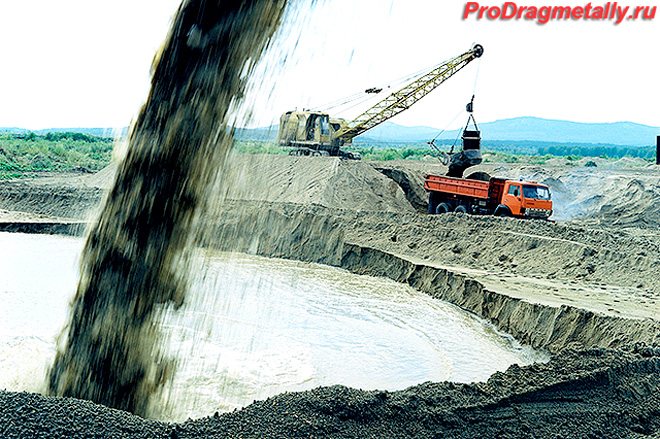
The concentration of gold in placers varies. It varies from 0.01 to several milligrams in each cubic meter of mined ore material. Whole nuggets are also found in the Ural Mountains.
The attractiveness of local placers, from the point of view of private miners, is due to several factors. Firstly, there are more than one hundred of these deposits in the Urals. Secondly, they are formed by erosion of rock, due to which gold-bearing layers are formed on the river bottom. You can also look for metal in the area of the old riverbed. In other words, in the area where the river used to flow.
Placers in the Urals are a rich source of gold. Such deposits are found in various areas of the Siberian mountains, both close to populated areas and at a considerable distance from them.
Tagil Gold
The end of last week in Nizhny Tagil was marked by a noisy scandal. According to regional media reports, 25 kilograms of gold belonging to the city allegedly disappeared from the city hall’s safe deposit box in Tagilbank. Boxes of gold were found almost immediately, but journalists and townspeople still had questions about the gold reserves.
The history of Nizhny Tagil gold is already about 30 years old. In the mid-1980s, a Territorial Inter-Industry Association was created in the city, which included almost all the main enterprises of Nizhny Tagil. The main task was to put the city economy in order, for which, in particular, they decided to clear the bottom of the Tagil River from the waste accumulated over many years from the metallurgical and coke-chemical production of the Nizhny Tagil Metallurgical Plant.
One of the contractors, the Neiva artel from the Uralzoloto system, collected more than 50 kilograms of pure gold during the cleaning of the river bed in 1987-1989. How, from a technical point of view, such an amount of pure, rather than technical gold, could have ended up in the river is perhaps the most slippery question. In the region they try to avoid it because it affects too wide a circle of respected people.
An honorary citizen of the city, and at that time first deputy chairman of the city executive committee and supervisor of river cleanup work, Nikolai Danilov says: “I’ve already been tested for gold 20 times. I washed it - I have all the documents, we handed it over to Gokhran according to the acts. Then other people came. I don’t know where they put it. As for our work, you are left with a clean river.” For reference: almost immediately after the completion of the cleanup work, Danilov left power, becoming an associate professor at the Sverdlovsk Higher Party School (since 1991, the Ural Socio-Political Institute) for three years.
What happened to the recovered kilograms of precious metal over the course of four years is unclear. Let us only note that during this period Danilov worked closely with the head of the administration of the Sverdlovsk region, Eduard Rossel, who was removed from office in 1993 for attempting to proclaim the Ural Republic. In February of the same year, the Government of the Russian Federation issued Decree No. 96 “On measures for state support of socio-economic development, improvement of the environment and population of the city of Nizhny Tagil, Sverdlovsk Region” signed by Viktor Chernomyrdin. Paragraph 4 of this document read: “To allow the administration of the city of Nizhny Tagil to retain at its disposal precious metals from tailings dumps, ponds and technogenic placers that were incidentally mined during land reclamation work within the city and the Prigorodny district. Establish that foreign exchange earnings received from the sale of mined precious metals in the prescribed manner are used for the intended purpose for the environmental improvement of the environment and the population of the city of Nizhny Tagil and surrounding areas.”
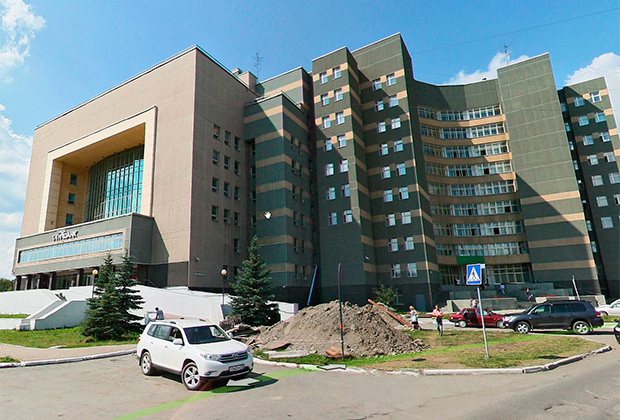
"Tagilbank"
Image: Yandex.Maps service
According to various sources, part of the gold was sold abroad even before the government decree, and the city opened a foreign currency account with Soyuzvnesheconombank for 59 thousand dollars. This money was subsequently spent on the purchase of imported medical equipment for city hospitals. The unsold precious metal was left on the city’s balance sheet and planned to be used for environmental needs, as stated in Resolution No. 96. The media reported that part of the gold was used for medals for the 250th anniversary of Nizhny Tagil and “Honorary Citizen” badges, but at least on the first point there are serious doubts, since the anniversary was celebrated back in 1972. It is not known exactly how much precious metal remained in the end, but according to rumors circulating in the city, Tagil’s gold reserves currently range from 20 to 25 kilograms.
It is unclear where Tagil gold was stored until 2000. On April 28, 2000, the administration of Nizhny Tagil entered into a Property Storage Agreement with OJSC Tagilbank, according to which the bank received “four parcels totaling 4 (four) rubles.” The contract expired on December 31 of that year and, apparently, was not renewed. At least, no documents to this effect were found in Tagilbank itself. The four rubles mentioned in the agreement were, perhaps, the main reason for the panic in the Nizhny Tagil city hall last week. Indeed, according to the agreement, even if the term expired 14 years ago, “in the event of loss, shortage or damage to property, the custodian is obliged to compensate the bailor for the cost of the lost, missing or damaged property in accordance with the inventory and the value of the property indicated in the inventory.” In other words, instead of 25 kilograms of gold, the city leadership risked receiving as much as four rubles.
Nikolay Danilov
Photo: ntagil.org
The post of head of Nizhny Tagil, Nikolai Didenko, whose reign accounts for the gold “deposit” in the bank, was replaced in 2008 by Valentina Isaeva. According to her, immediately after taking office, she was informed about the existence of the city's gold reserves. “The head of the financial department, Alexander Dmitriev, reported to me that the city’s gold was stored in the Tagilbank safe. I don’t remember exactly how much, I think it was 22 kilograms. He lies there and lies there, I didn’t check, I didn’t see him personally,” Isaeva told regional media. In 2012, after winning the elections, the current mayor of the city, Sergei Nosov, was informed about the legendary gold. He continued the traditions of his predecessor and, like a true gentleman, took her word for it.
At the beginning of 2015, the issue of city gold arose again, since, according to sources close to the city administration, a fundamental decision was made to sell what had long been mined and use the proceeds to solve social problems, including the construction of a sports complex. On February 6, the mayor’s office sent a request to Tagilbank about the location of the gold. However, the received response put an end to the official's dreams. The bankers informed that due to a significant period of time that had passed since the expiration of the storage agreement, the bank did not have at its disposal the original storage agreement, and also did not have information about its subsequent prolongation. In addition, due to the extremely low declared value of the stored property, it could be returned without an acceptance certificate.
On Wednesday, February 11, the safe deposit box was opened in the presence of Sergei Nosov, and, as you might guess, there were no “parcels” there. The head of Nizhny Tagil did not make official statements on this matter, but was extremely dissatisfied with the situation. The search for gold continued at the bank, and on Friday, February 13, four sealed wooden boxes were found in one of the vaults.
The situation is extremely delicate. On the one hand, Tagilbank does not have the right to store precious metals, since, in particular, it does not have suitable premises for this. Such a violation could cost the bank its license. On the other hand, there was and is no inventory of what was stored in the boxes, their stated value is a ruble per box, and from a formal point of view there is no reason to believe that the boxes contain precious metals: urban rumors and legends should not be considered grounds. On the third hand, the mayor's office is in no hurry to take the boxes, because it is also not sure of their contents. Apparently, the boxes had not been opened at all since they were delivered to the bank.
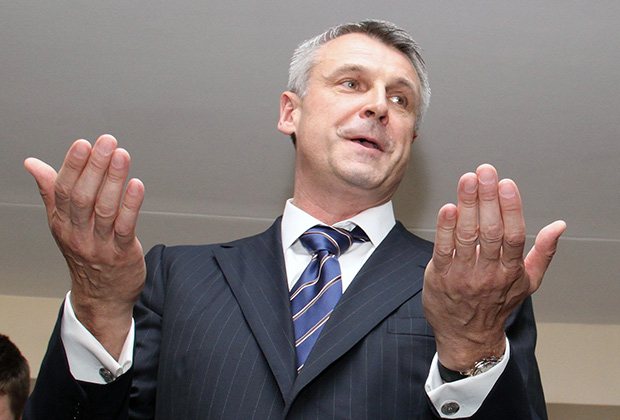
Sergey Nosov
Photo: Ekaterina Titova / Kommersant
Officials intend to create an inventory commission to open the boxes under video recording and weigh the gold. But it is completely unclear where and how to transport the gold, since it is impossible to store it directly at the city hall. In addition, we have to figure out how to pay for the 14-year storage of the boxes. The issue of inventory and return of property to the city hall must be agreed upon and resolved by February 20. If those same legendary 20-25 kilograms of gold are found in the boxes, the city leadership can count on replenishing the budget by 50-60 million rubles (based on the current rate of the Central Bank of the Russian Federation). If not (which also cannot be ruled out), the saga of Nizhny Tagil gold will continue.
Where to search
As an example of the Ural placers, two of them can be cited:
- Bolsheshaldinskaya;
- Moss swamp.
The Bolsheshaldinskaya placer has been mined for about two centuries. According to research conducted by a Soviet geologist, this deposit is located near primary sources. At the Bolsheshaldinskaya placer there are both small inclusions of gold-bearing mass and whole nuggets. Moreover, the first ones occur most often.
Alluvium (rolled) materials are hidden in the local area under clay and a black marshy layer. Almost all sediments here contain gold. The exception is floodplains.
The following minerals are found at the Bolsheshaldinskaya placer:
- magnetite;
- titanite;
- pyrite;
- monazite;
- rutile and others.
If for some reason a prospector was unable to find a map of the Ural deposits, these minerals will make the search for gold-bearing layers easier. The precious metal that the Bolsheshaldinskaya placer contains is one of the purest. It contains only silver in small concentrations.

The moss swamp is located in the Southern Urals, in the Chelyabinsk region. There are also primary deposits with a high content of quartz and sulfide. According to the results of the surveys, for every ton of rock collected in the Moss Swamp, there are up to 1-10 grams of gold and 10-13 (even 50-100 are detected) grams of silver.
Also, research data indicate that the precious metal is presented here in the form of intergrowths with quartz or individual nuggets. The largest “ingot” found in the Moss Swamp weighed 94 grams.
Both placers are rich sources of gold. They contain small and large inclusions of high-grade noble metal.
How gold is mined
In the Urals, traditional technologies are used for gold mining using:
- Industrial device. It is not recommended to use industrial equipment for gold mining in the Ural Mountains. The fact is that such an installation traps fairly large particles of metal. However, in local placers, the material is often either included in other minerals or has very small sizes. In addition, Ural gold is hidden under a layer of clay and heavy soil. In Soviet times, devices were used at local deposits that could capture particles ranging in size from 0.5 to 80 mm. Moreover, even the use of such equipment did not exclude numerous losses. According to researchers, industrial devices released up to 15-40% of the gold mass back into the soil. And particles no larger than 0.25 mm in size were not recovered at all. Experts believe that with minimal investments and the organization of small enterprises, up to 7 tons of gold can be extracted annually from already developed Ural deposits.
- Minidrag. Minidrags are autonomous installations through which river sands are washed in order to extract gold particles from them. These devices include pumps that supply the material. Mini dredges are used in various placers and flooded areas where gold-bearing masses may potentially occur.
- Minigates. Mini-sluices have a design similar to mini-drags. The difference in the design of both devices is that the latter are mounted on pontoons. Mini-gates are installed on the banks of gold-bearing rivers. These devices, through a flexible hose, suck in sand, which is fed to a hydraulic screen, where the material is initially purified from impurities. Mini-sluices are also used in dry areas containing gold-bearing strata.
- Metal detector. Another device that private miners use in their work. Depending on the characteristics of the metal detector, it is capable of detecting gold inclusions in the soil layer at a depth of up to 50 cm. Some devices are equipped with a disintegrator that determines the type of mineral rock.
Novice miners also use special trays for washing gold-bearing sand in rivers.
Is gold mining allowed for private individuals in the Russian Federation - the main provisions of the legislation
The Constitution of the Russian Federation states that all natural resources belong to people. On the one hand, this is true, but on the other, permits for gold mining are issued only to large corporations, as a result of which small companies, and even more so ordinary citizens, have practically no chance of getting into this field of activity. In turn, the lack of a license may lead to criminal liability being imposed on a citizen who tried to extract or sell metal.
Private individuals have the right to mine gold, but provided that the work is carried out in regions where this is permitted. The limitation is that industrial gold ore mining should not be carried out on the territory of the subject. Only licensed companies have the right to develop the deposit here.
Recommendations for working with a metal detector
If in the case of mini-dredges and mini-sluices it is initially clear how to choose a place for future mining, then when working with a metal detector it is recommended to go to the territory where nuggets weighing more than 50 grams were previously found. This device simply will not detect small gold particles. You can find out in which region relatively large nuggets were previously discovered from geologists or at the local library.
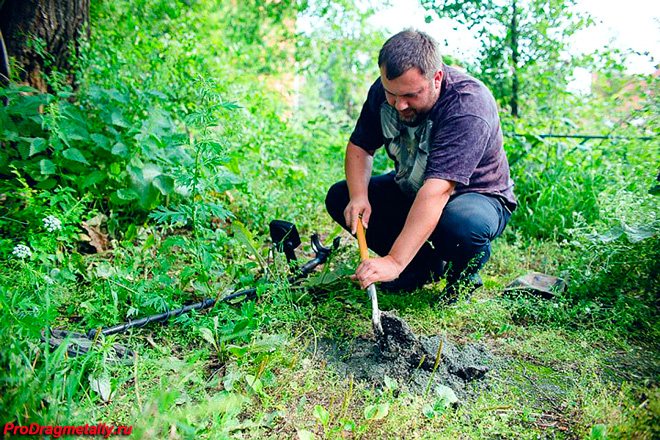
Quite often, large particles of gold are localized in a separate area, forming so-called nodes. Accordingly, once found, a nugget will most likely lead to other large-sized precious metals. It is important to understand that in most cases such deposits have been previously mined. However, during mining, some of the minerals often remain in the ground.
The search for gold-bearing masses in the Urals is carried out on:
- new areas;
- technogenic (spent) placers.
The most preferable search is in new areas. It should be noted that work in such territories often leads to unsatisfactory results. On the other hand, there is a possibility that a small gold mine may be discovered. In addition, there are many unexplored areas in the Urals that could potentially hide precious metals.
Working on technogenic placers is suitable for those who, first of all, want to extract gold. Such areas always contain several grams of precious metal. However, a prospector in technogenic placers will not be able to extract gold in significant quantities.
For what reason were private individuals allowed to mine gold?
As a rule, citizens mine gold in very small quantities, so they cannot compete with large firms. On the other hand, there may not be too much gold in the ground and it may not be advisable to develop it on an industrial scale. For one person, this can be a profitable business.
As a result of this, gold mining was allowed to private individuals, but with some restrictions. An example is the situation in the Magadan region. Today, more than 1,500 citizens are engaged in gold mining there, but the total volume is precious. metal is only 900 kg. For large corporations this is unprofitable, but for ordinary people it is a very significant source of income.
Search in waste placers
When choosing an area of technogenic placers to search for gold-bearing veins, it is recommended to pay attention to areas located near the headwaters of rivers. This is explained by the fact that large particles of precious metal are poorly transported by water flows. Therefore, they accumulate near the gold-bearing vein. In the lower reaches, mostly small gold is found.
Individual nuggets may be found in these areas. But discovering such zones seems to be a rather difficult task, requiring patience and luck from the prospector. Beginner gold miners are advised not to go further than 2 km from the source of the river.
When searching, you should pay attention to areas where bedrock is exposed. It is best to mine the material immediately after industrial mining has ended at the site. This is explained by the fact that even with highly efficient equipment and complete clearing of the territory, there remain cavities that have preserved gold.
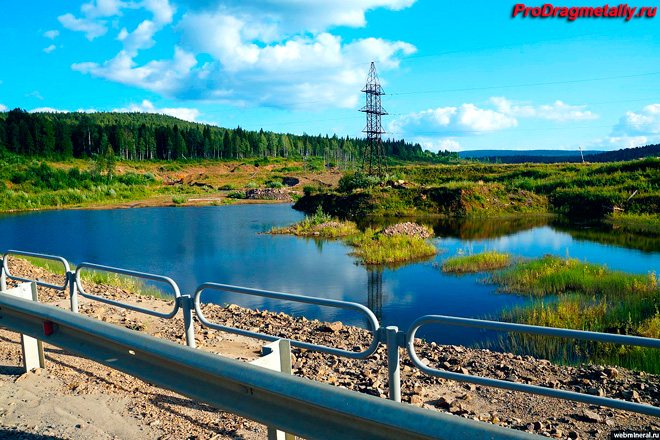
So, when searching for precious metal in technogenic placers, you should select areas:
- where commercial production has recently completed;
- they are located in the upper reaches of rivers;
- deposits include relatively large gold.
In cases where the carpenter is completely closed, you can use a metal detector to look for gold in sand dumps. Quite often in such formations, nuggets are found together with quartz.
Working with dumps is more difficult. They contain a lot of small metal debris.
General procedure for obtaining a gold mining license
Until recently, licenses for the extraction of “yellow” metal were issued only to legal entities. Citizens were prohibited from removing metal from the bowels of the earth. This state of affairs existed until 2016. Since that time, D. Medvedev proposed amendments to Russian legislation regarding the issuance of gold mining licenses to individuals.
Where to apply for a license?
Since the territory is at the disposal of the state, permission must be obtained from the authorized agency - the state agency RosNedra. The organization has several branches that can also issue license permits. Sometimes the document is issued by the Ministry of Nature of the Russian Federation. These same departments are responsible for organizing auctions for the right to develop the largest deposits. More details about the procedure for processing documents can be found on the official websites of these departments.
Conditions for obtaining a gold mining permit?
According to the current legislative regulations, a license can be issued to a private person only if the subsoil contains less than 10 kg of gold. Separately, it is worth mentioning the period for which a license can be issued, namely:
- If a citizen plans only to mine precious metals and not conduct any other activities, then the license period will be up to 20 years.
- When additional geological surveys are carried out, the validity period of the permit may be 25 years.
- To conduct geological surveys, but without gold mining, a license is issued for 5 years.
Such terms apply to individual entrepreneurs, but for private owners, the license term is limited to 5 years. It is also not always possible to choose the desired plot of land. And yet, private owners cannot use special equipment, bulldozers, drilling machines and other units.

